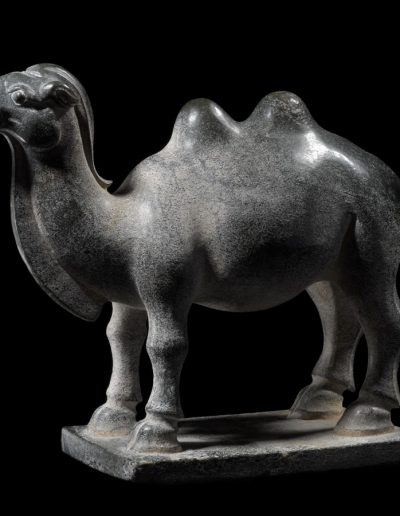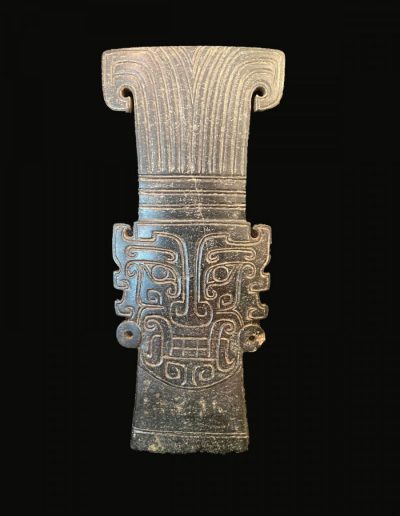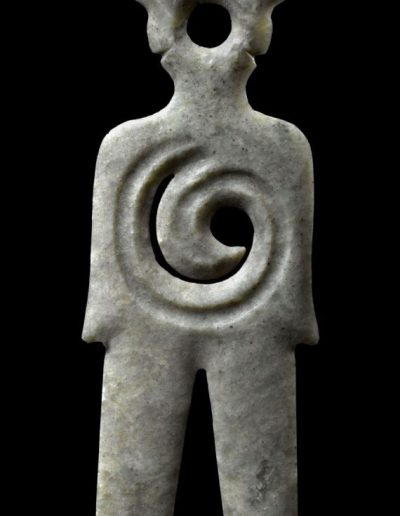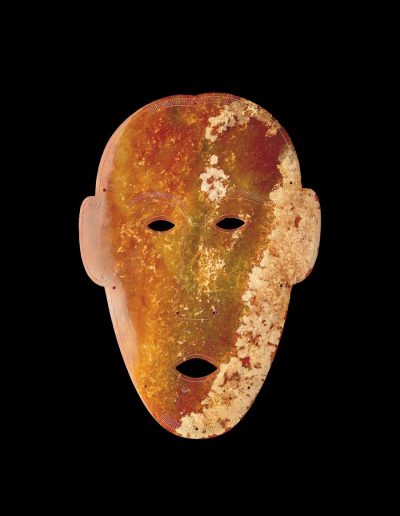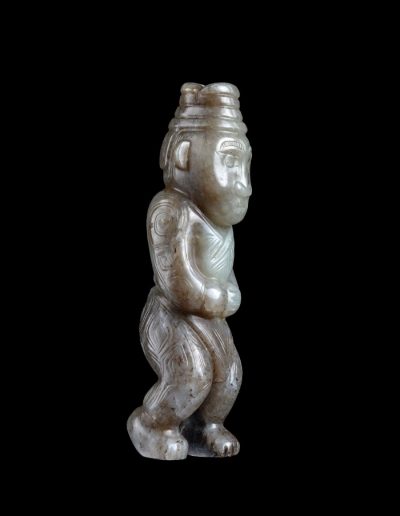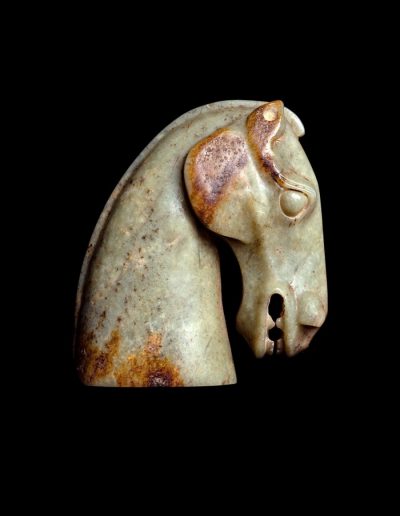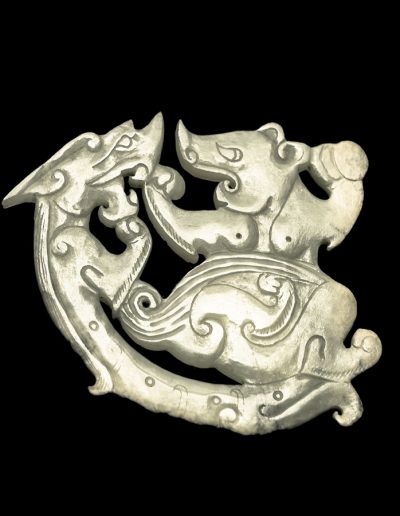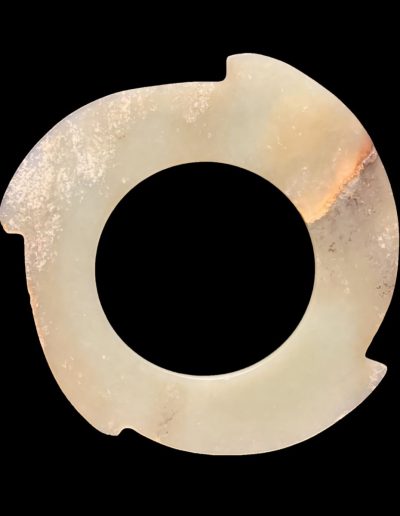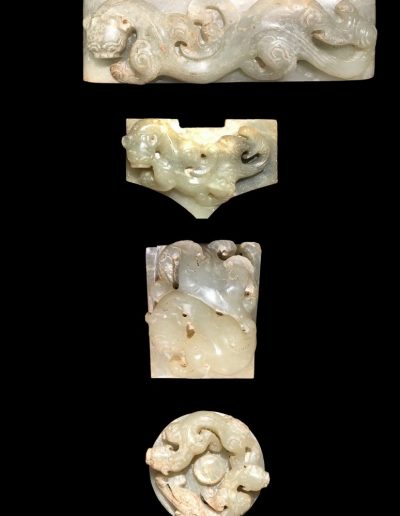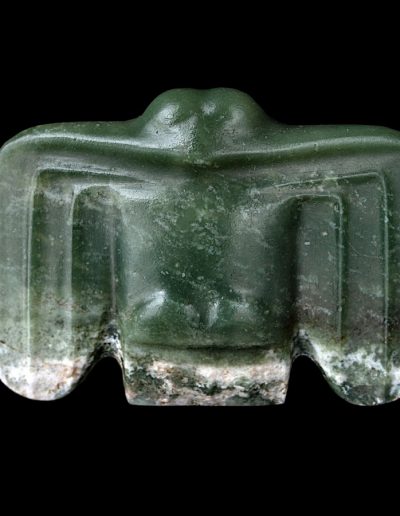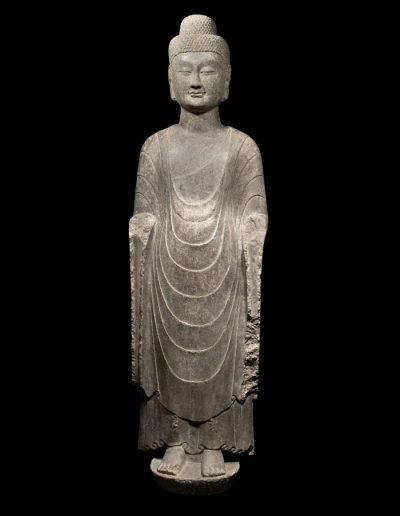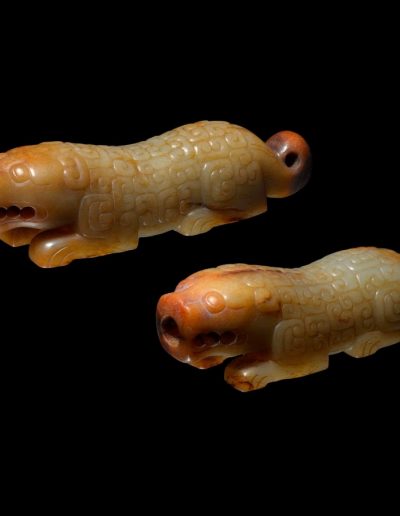Jade – The Stone of Heaven Exhibit
March 18th – June 12th, 2021
Jade - The Stone of Heaven Exhibit Brochure
Complete with the artists’ works, and stock numbers when referencing for purchase.
Jade is the primary hard stone of Chinese sculpture. Although, in the West, jade is commonly assumed to be deep and bright green, jade comes in a variety of colors, all of which have been appreciated in China. Jade is prized for its hardness and durability, as well as its beauty. In China, jade’s translucent colors led to it being associated with the soul and immortality. Indeed jade, along with gold, has long been considered in China to be a symbol of heaven.
The earliest jades shown in the exhibit are from the Hongshan Culture, a Neolithic culture dating from 4700 to 2900 BCE. This culture was centered in northeast China, and it appears to be the bedrock for much of Chinese civilization. Excavations, prominently by Japanese archaeologists at the beginning of the twentieth century, brought to light impressive jade carvings. These small-scale sculptures are sophisticated, well-carved, and finely polished. They were clearly imbued with considerable meaning. Today, while enigmatic, these early jade carvings have a tactile appeal, and the luminous stones they are carved from give them a rare-and unique-beauty.
The Liangzhu Culture was the last Neolithic jade culture in the Yangtze River Delta of China, dating from 3400 BCE to 2250 BCE. The Shang Dynasty ruled from 1600 to 1046 BCE in the middle and lower Yellow River Valley, succeeding the Xia Dynasty. (The Yangtze River is the longest river in China; the Yellow River is the second-longest river in China.) The exhibit includes jade carvings from these three cultures. The Shang Dynasty produced a trove of blades and pendants, and arresting examples are displayed in the exhibit.
There are also many fine jades in the exhibit from the successive eras of the Zhou Culture, which dated from roughly 1100 to 221 BCE. The exhibit is especially rich in jades from the last of the three periods of the Zhou Dynasty and the Warring States Period (which extended for 260 years). States declared independence from the Zhou Dynasty, and kingdoms—at one point seven of them—fought for territory. Despite the conflict, fine jade carving continued, and even flourished. Jade carvings from this era prominently included dragons and other mythical beings, and there are splendid examples included in the exhibit.
The Qin conquest of the other states led to the establishment of the Qin Dynasty in 221 BCE, which, in turn, marked the transition between ancient China and Imperial China. The Qin Dynasty was short-lived and was followed by the Han Dynasty, sometimes called the Golden Age of ancient China. It was a four-hundred-year era, from 206 BCE to 220 CE. There was peace and prosperity—and a flowering of the arts, including of jade carving. The exhibit has many fine jade carvings from this period. Jade carvings from the Han Dynasty are more sculptural, and more refined, than those from earlier Chinese cultures.
Taken together, this carefully curated exhibit offers an enthralling view of the early history of jade carving in China. All jades have been vetted by Archaeologist Gu Fang.








